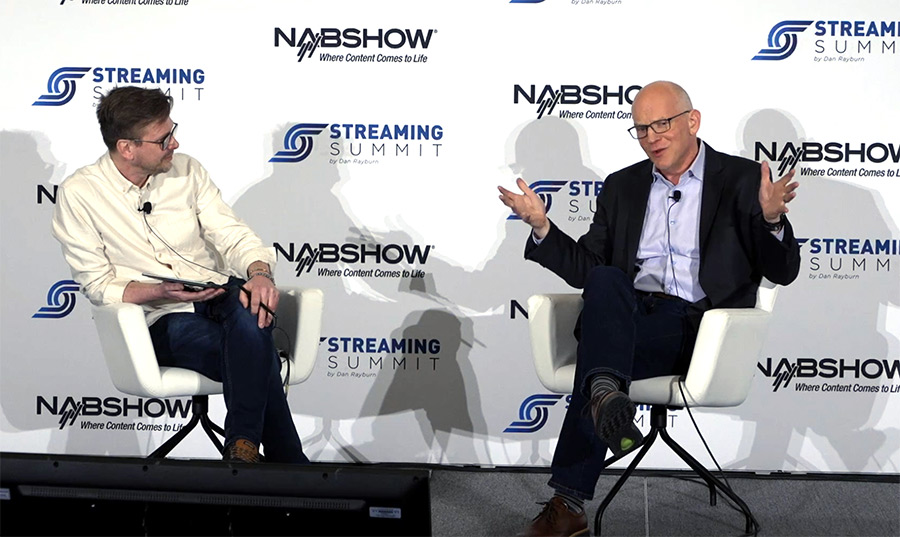Due to technical and economic limitations, sports were once scarce on streaming services. However, as league licensing agreements come to an end, mega-corporations merge, and video quality rises, we are approaching a new frontier in the so-called ‘streaming wars.’ The relationship between brands and consumers is changing quickly as streaming becomes a widespread content delivery method. We are now seeing one of the biggest recalibrations in how content creators and other sports rights-holders engage with their fan bases and how advertisers try to reach their consumers.
Indeed, the emergence of streaming sports delivered via OTT platforms is becoming increasingly commonplace. Take, for instance, the recent announcement that Amazon and UEFA have agreed on a new Champions League rights deal. This follows Amazon’s recently announced 11-year deal with the NFL to broadcast Thursday Night Football live on the Amazon Prime Video app and its existing deals with the ATP tennis tour and the English Premier League in the UK. HBO Max also joined the competition in 2022 with an eight-year deal with the US Soccer Federation, bringing the sport to its streaming platform from 2023 lasting eight years. And after having sublicensed games from Pay-TV operators for some time, FuboTV acquired a three-year exclusive rights deal to stream Premier League games in Canada.
Another of the ‘big four’ tech firms has also been busy recently. Apple and Major League Soccer (MLS) have signed a 10-year global streaming rights deal for $2.5 billion, starting in 2023. The Apple TV app will stream every MLS game live, bringing together all of the league’s content under one roof. It is a hybrid approach consisting of an Apple-provided aggregated service and a rights-holder branded direct-to-consumer (D2C) offering. This follows Apple’s earlier acquisition of a package of MLB rights in nine territories, including the US and Canada.
Sports rights-holders move towards D2C
Moving to the D2C market offers new and exciting opportunities for rights holders to supply highly interactive, personalized services and provide flexible, data-driven options that more effectively target specific audience segments. The secret is to put the customer first and create the most effective, straightforward user experience possible. It’s something that the big tech firms have demonstrated consistently in all their prior commercial endeavors. Therefore, it’s telling that Apple and Amazon are now entering the sports space so aggressively. Leagues have also been busy launching D2C services of their own, including FIFA+, FIBA Courtside 1891, and FIVB.
Fans of live sports now naturally demand the same stability in streaming delivery because companies like Netflix, Hulu, Disney, and others have completely changed the landscape of VOD entertainment. They want more affordable, adaptable, and user-friendly access to their preferred sports on any device. D2C platforms rise to the occasion and are becoming more popular. In the 2021 MediaKind Sports D2C Forecast report, 40 sports rights-holders were examined, and 70% reported operating some sort of subscription D2C service with varying content offerings and monetization strategies. They included yearly material (60%), monthly content (58%), pay-per-view for specific events (18%), and archived content (5%).
A new way to experience live sports
As a result, the streaming space offers great potential to transform the way we watch live sports. This could include multiple camera feeds with live player statistics overlaid, real-time social media interactivity with players and fellow fans, and on-demand alternatives. And that’s only just scratching the surface. Sports rights-holders are looking for novel approaches to engage viewers in two-way interactions, and in this regard, D2C streaming platforms serve as a foundational pillar.
Increasingly, we are seeing service providers embracing new engagement technologies such as in-game betting, social media integration, and gaming to forge real connections between sports, players, and fans. The D2C architecture enables rights-holders to fully view and access more insightful fan metadata, enabling them to offer a more customized user experience. By developing a deeper understanding of their fan base, clubs and leagues can now increase monetization income. Example methods include merchandising, ticket sales, advertising, and sponsorship.
The chance to innovate and radically change the sports industry
As we found in MediaKind’s Sports D2C Forecast, the top four US professional leagues appear to be more advanced in exploring the potential of D2C services than their European equivalents. For instance, the NBA already provides access to live games and on-demand material through its D2C service – the ‘NBA League Pass’ platform.
But the landscape in Europe is starting to change – and the forecast could be very different in a decade! According to a new estimate from Ampere Analysis, subscription OTT services are expected to spend 20% more on sports rights this year compared to 2021 in all five major European markets. We also see new players emerging to rival the sports industry’s traditional broadcast juggernauts. For instance, DAZN spent the third most on TV sports rights last year in the top five European markets.
Enabling a world where live streaming can be delivered without limits
One of the biggest challenges facing any sports operator, broadcaster, or content owner is launching a platform and developing an infrastructure intended to deliver and monetize the live experience reliably at scale. OTT delivery has specific challenges around live sport because of how content is delivered over the internet. My colleague, Chris Wilson, recently participated in a panel discussing the challenges and opportunities surrounding streaming latency. But other issues include:
- Buffering, reduction in picture quality, and outages during surges in internet traffic
- Variations in quality in different parts of the world
- Being able to process a large volume of last-minute sign-ups to paid services online
- Delays in the start time for video content
Any D2C platform’s success or failure depends on how well it handles a variety of live streaming concerns, such as scalability, latency, personalization, attaining broadcast-level visual quality, and monetization. For rights-holders looking to break into the D2C space, it’s imperative that they can guarantee stability and scalability, particularly for those looking for the capacity to deliver multiple streams and services around the same event, and the ability to spin up or spin down the service. Ultimately, they need to be able to guarantee a level of experience that works for all viewers, regardless of consumption patterns.
A new model for live sports streaming
We are still a way off from arriving at a situation where D2C services are utilized as the principal distribution platform by the majority of sports rights-holders because of the current significance of linear media rights revenue in professional sports economics.
However, the recent high-profile streaming agreements in the sports space serve as both a test case for prospective sports rights holders and a barometer for where the streaming industry has now evolved. Sports right-holders want to realize the full potential of their live content and offer a distinctive commercial pitch that appeals to their fan base. And they are acutely aware that “streaming” is no longer a distinct category from any other form of entertainment.



